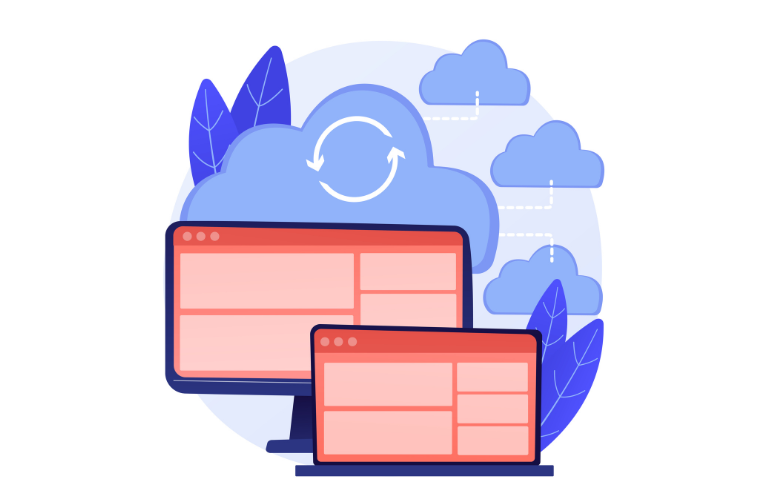Navigating free tier AI API limits in 2025 is crucial for developers running web apps on a budget. With platforms like Google Gemini offering 1,500 daily calls in their free tier, staying within these constraints while serving a large user base can be challenging.
This article provides actionable strategies, real-world implementation examples, and time-saving shortcuts to help you maximize AI API usage without hitting limits. Whether you’re a hobbyist, startup founder, or small business owner, these tips will ensure your app runs smoothly while keeping costs at zero.
Table of Contents
Why Free Tier AI API Limits Matter
Free tier AI APIs democratize access to powerful tools like natural language processing and code generation. However, strict limits, such as Google Gemini’s 1,500 daily calls, require careful management. Exceeding these can halt your app’s functionality or force you to upgrade to paid plans, which isn’t always feasible for free services. Understanding and optimizing free tier AI API limits ensures sustainable app performance and user satisfaction.
Common Challenges with Free Tier AI API Limits
Developers often face hurdles when managing free tier AI API limits. For instance, a web app with over 1,000 users, like the one discussed in a Reddit thread, struggles to fairly distribute 1,500 daily Gemini calls. Users may demand burst usage, and not all log in daily, complicating allocation. Additionally, occasional API call failures can waste precious quota. These challenges highlight the need for strategic planning.
Strategies to Stay Within Free Tier AI API Limits
To effectively manage free tier AI API limits, adopt a combination of user allocation, technical optimization, and monitoring techniques. Below are proven strategies tailored for 2025.
1. Implement Per-User Quotas
Allocating API calls per user ensures fair distribution. However, a rigid one-call-per-user limit, as suggested by Reddit user d1rty_j0ker, may not suit apps with burst usage patterns.
- Set Flexible Quotas: Allow users 5–10 calls daily, adjusting based on usage patterns. For example, a Reddit user suggested a first-come, first-served model with a 5–10 call cap.
- Prioritize Active Users: Track login frequency and allocate more calls to frequent users, as not all users engage daily.
2. Cache API Responses
Caching frequent API responses reduces redundant calls, preserving your free tier AI API limits. For instance, if your app generates similar AI documents, store results for reuse.
- Use In-Memory Caching: Tools like Redis can cache responses for quick retrieval.
- Set Cache Expiry: Expire cached data after 24 hours to balance freshness and quota savings.
3. Optimize API Requests
Efficient API calls minimize quota usage. Combine multiple tasks into single requests or use batch processing where supported.
- Batch Requests: Group user queries into one API call when possible. For example, Google Gemini supports batch processing for certain endpoints.
- Reduce Token Usage: Craft concise prompts to lower token consumption, especially for language models.
4. Monitor and Limit Usage in Real-Time
Real-time monitoring prevents unexpected quota exhaustion. Set up alerts and caps to stay within free tier AI API limits.
- Usage Dashboards: Most platforms, like Google AI Studio, provide dashboards to track API usage.
- Rate Limiting: Implement server-side rate limiting to cap calls per user or session. For example, a Reddit user capped their app at 30 calls per user daily as a stop-gap.
5. Leverage Multiple Free Tier APIs
Don’t rely on one provider. Platforms like OpenRouter and Hugging Face offer free tiers that can supplement Gemini’s limits.
- OpenRouter: Access models like DeepSeek with $5 free credits, as noted in a community article by Lynn Mikami.
- Hugging Face: Use thousands of open-source models with no credit card required, ideal for testing.
Implementation Example: Managing Gemini API Limits
Let’s walk through a practical implementation for a web app using Google Gemini’s free tier. This Python example uses Flask, Redis for caching, and rate limiting to stay within free tier AI API limits.
Step 1: Set Up Flask and Gemini API
Install dependencies and configure your Gemini API key.
pip install flask redis python-decouple google-generativeai
from flask import Flask, request, jsonify
from google.generativeai import GenerativeModel
from decouple import config
import redis
app = Flask(__name__)
gemini = GenerativeModel('gemini-1.0-pro')
client = redis.Redis(host='localhost', port=6379, db=0)
gemini.api_key = config('GEMINI_API_KEY')Step 2: Cache Responses with Redis
Cache AI-generated responses to avoid duplicate calls.
def get_cached_response(prompt):
cached = client.get(prompt)
if cached:
return cached.decode('utf-8')
response = gemini.generate_content(prompt).text
client.setex(prompt, 86400, response) # Cache for 24 hours
return responseStep 3: Implement Rate Limiting
Limit each user to 10 calls per day using a Redis counter.
def check_rate_limit(user_id):
key = f'rate_limit:{user_id}'
count = client.get(key)
if not count:
client.setex(key, 86400, 1) # Reset after 24 hours
return True
if int(count) < 10:
client.incr(key)
return True
return FalseStep 4: Create API Endpoint
Handle user requests while enforcing limits and caching.
@app.route('/generate', methods=['POST'])
def generate_document():
user_id = request.json.get('user_id')
prompt = request.json.get('prompt')
if not check_rate_limit(user_id):
return jsonify({'error': 'Daily limit exceeded'}), 429
try:
response = get_cached_response(prompt)
return jsonify({'result': response})
except Exception as e:
return jsonify({'error': str(e)}), 500
if __name__ == '__main__':
app.run(debug=True)Step 5: Test the Implementation
Run the Flask app and test with a curl command:
curl -X POST http://localhost:5000/generate -H "Content-Type: application/json" -d '{"user_id": "user123", "prompt": "Generate a summary"}'This setup ensures you stay within free tier AI API limits by caching responses, limiting user calls, and handling errors gracefully.
Time-Saving Shortcuts for Managing Limits
Maximize efficiency with these shortcuts to manage free tier AI API limits:
- Use API Wrappers: Libraries like google-generativeai simplify Gemini API integration, reducing setup time.
- Automate Monitoring: Set up scripts to ping API dashboards and alert you via email or Slack when nearing limits.
- Pre-Build Prompts: Store common prompts in a database to reuse across users, minimizing API calls.
- Fallback APIs: Automatically switch to Hugging Face or OpenRouter when Gemini limits are reached, using OpenRouter’s unified interface.
Navigating Terms of Service
Reddit users, like ske66, warned that some strategies, such as cycling multiple API keys, may violate Gemini’s terms of service. Always review provider policies to avoid account suspension. Instead, focus on legitimate methods like caching, rate limiting, and multi-provider setups.
Alternative Solutions
If free tier AI API limits are too restrictive, consider these alternatives:
- Self-Hosted Models: Use Ollama to run local models with no usage caps, as suggested by Lynn Mikami’s article.
- Paid Plans: Small investments, like $5 credits for Gemini, can significantly expand capacity, as Reddit user femio recommended.
- User-Provided Keys: Allow users to register their own API keys, as proposed by Reddit user armahillo, shifting the burden off your app.
Best Practices for Long-Term Success
To sustainably manage free tier AI API limits in 2025, adopt these practices:
- Track Usage Patterns: Analyze user behavior to fine-tune quotas. For example, the Reddit OP noted burst usage, requiring flexible limits.
- Optimize Code: Minimize API calls by streamlining logic and avoiding unnecessary requests.
- Engage Communities: Platforms like Reddit and X offer insights from developers facing similar challenges. Join discussions to stay updated.
Conclusion
Managing free tier AI API limits in 2025 doesn’t have to be daunting. By implementing per-user quotas, caching responses, optimizing requests, and leveraging multiple providers, you can keep your app running smoothly within constraints. The provided Flask example demonstrates how to integrate these strategies practically, while shortcuts like API wrappers and automated monitoring save time. Stay compliant with terms of service and explore alternatives like self-hosted models if needed. With these tips, you’ll maximize the potential of free AI APIs while delivering a seamless user experience.
FAQs
Below are 6 simple and commonly asked questions about managing free tier AI API limits, designed to help users find quick answers and improve search engine ranking.
1. What are free tier AI API limits?
Free tier AI API limits are restrictions set by providers like Google Gemini, allowing a fixed number of API calls (e.g., 1,500 daily calls for Gemini) at no cost. These limits ensure fair usage for developers building apps without paying for premium plans.
2. How can I stay within free tier AI API limits?
To stay within limits, set per-user quotas (e.g., 5–10 calls daily), cache API responses using tools like Redis, optimize prompts to reduce token usage, and monitor usage via provider dashboards. Using multiple free APIs, like Hugging Face, can also help.
3. What happens if I exceed free tier AI API limits?
Exceeding limits may pause your app’s AI functionality until the quota resets (usually daily or monthly) or require upgrading to a paid plan. Some providers may temporarily block access, so implement rate limiting to avoid this.
4. Can I use multiple free AI APIs to bypass limits?
Yes, you can use multiple free APIs, like OpenRouter or Hugging Face, to supplement limits. For example, switch to Hugging Face’s free models when Gemini’s 1,500-call limit is reached. Ensure compliance with each provider’s terms of service.
5. How do I track my free tier AI API usage?
Most providers, like Google AI Studio, offer dashboards to monitor usage. You can also set up alerts or use scripts to notify you via email or Slack when nearing limits, ensuring you don’t exceed your free tier AI API limits.
6. Are there tools to optimize free tier AI API limits?
Yes, tools like Redis for caching, Flask for rate limiting, and API wrappers (e.g., google-generativeai) simplify management. Pre-building prompts and batching requests also reduce API calls, helping you stay within free tier AI API limits.
7. Is it against terms to cycle API keys to extend free tier limits?
Cycling multiple API keys to bypass limits often violates terms of service, as noted in Reddit discussions about Gemini. Instead, use legitimate strategies like caching, optimizing requests, or self-hosted models like Ollama to manage free tier AI API limits.




